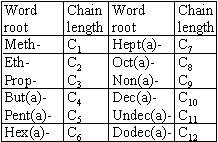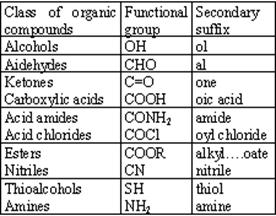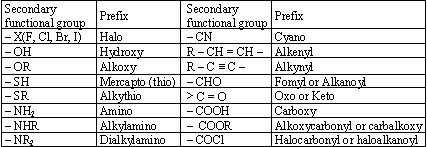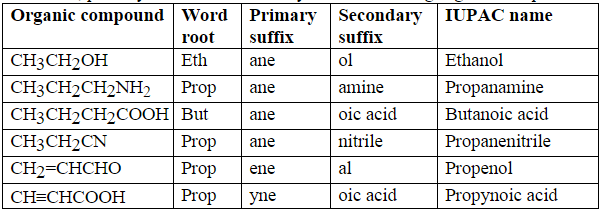How do learn the trivial names of organic compounds?
2 Answers
Are you asking how can we learn the trivial (i.e. non-systematic) names of organic compounds? The simple answer is by usage.
Explanation:
Many commonly used organic (and inorganic) chemicals have names that are hallowed by usage. Isopropanol (IPA) is one such that you would never hear referred to by its systematic name (which is?). The key is to avoid ambiguity.
The IUPAC nomenclature of organic of organic compound consists of following parts;
Prefix(es) + Word root + Primary suffix + Secondary Suffix
In order to learn naming of organic compound, we have to learn how to find above parts.
Explanation:
Word Root
The word root represents the number of carbon atoms in the longest carbon chain selected which is known as parent chain. Some important word roots are as follows:

Primary Suffix
It is used to represent the saturation(single bond) or unsaturation(multiple bond) in the carbon chain. Some of the primary suffix are;
Secondary Suffix
It is used to represent the functional group in the organic compound. Some important secondary suffixes are as below:

Prefix(ex)
It is used just before the word root and mainly represented the alkyl groups or some functional group which is regarded as a substituted group. Some important prefixes are as follows:

Keeping these principle in mind we can name the simple organic compound. The following examples illustrate the use of word root, primary suffix and secondary suffix in naming organic compounds.

For complex organic compound, we need to understand more various rules for writing IUPAC names. They are as follows:
1. Longest Chain Rule
2. Substituent Rule
3. Lowest Sum Rule
4. Alphabetical order
5. Complex Alkyl Substituent Rule
Thanks

